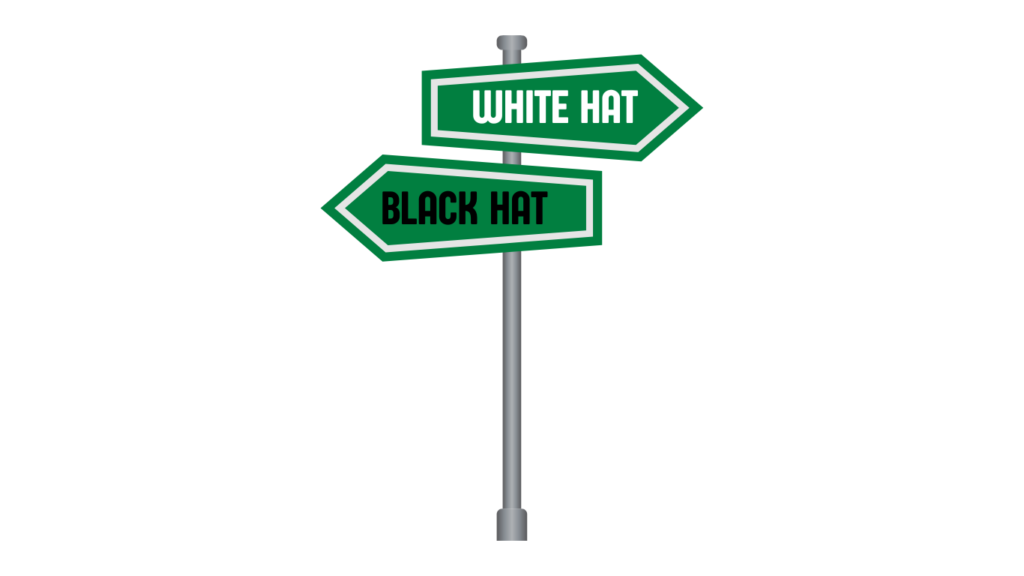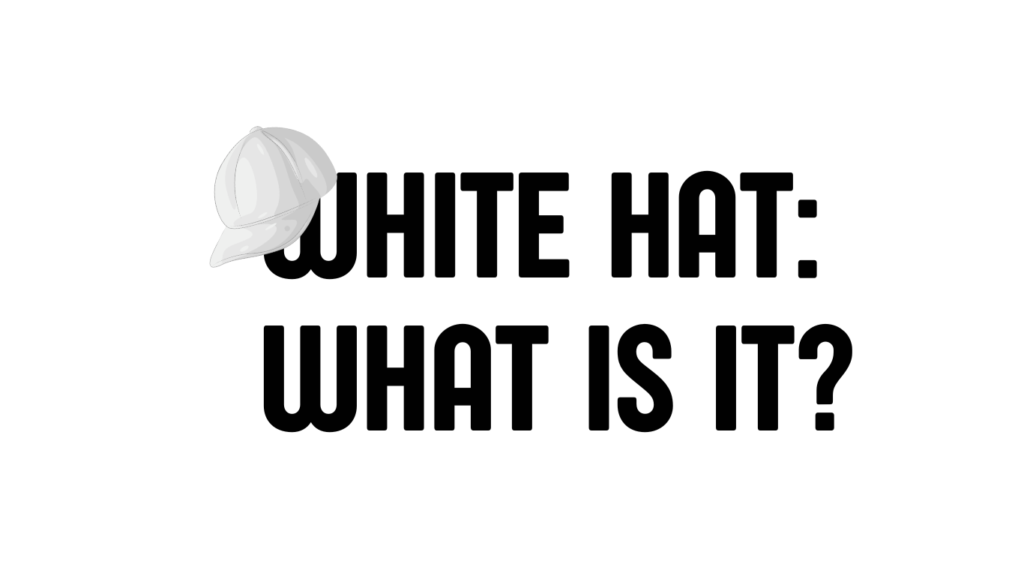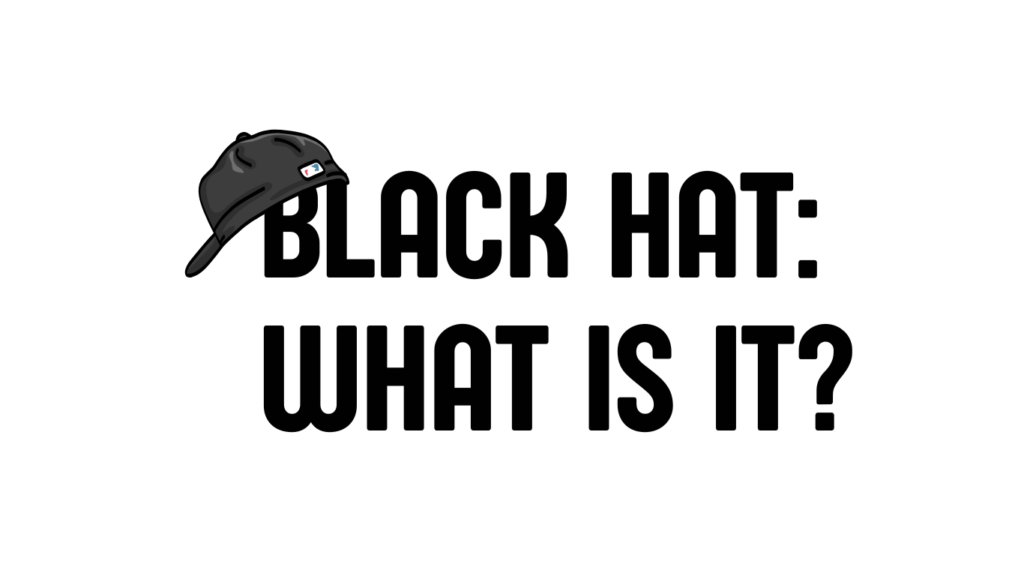Any effective digital marketing strategy must include Search Engine Optimization (SEO). However, not all SEO techniques are created equal. There are two primary approaches to SEO: White Hat and Black Hat. White Hat SEO focuses on ethical strategies that prioritize valuable content and user-friendly tactics to improve a website’s search engine rankings. These methods align with search engine guidelines and aim to provide long-term, sustainable results by enhancing the overall user experience.

What Is White Hat SEO?
White Hat SEO is the practice of increasing a website’s search engine rankings through ethical and user-centric methods. Rather than gaming search engine algorithms, these strategies focus on delivering high-quality content and delighting users. Common white hat SEO tactics include keyword optimization, creating high-quality content, improving website navigation and structure, and building natural links.
One of my earliest successes in digital marketing came from a simple realization: content is king.
Creating informative and educational material that matches a user’s search query and offers a positive user experience is a key component of creating high-quality content. This content can include blog posts, articles, videos, and other types of media.

Ensuring that a website is organized and easy to navigate for both humans and search engines is part of optimizing website structure and navigation. This includes creating simple and concise navigation menus, using meaningful page titles and meta descriptions, and optimizing website URLs.
Getting links from other high-quality websites and ensuring that links are relevant to the website’s content are important components of building natural and relevant links. This can be accomplished using strategies such as guest blogging, publishing shareable content, and creating high-quality infographics.
In a nutshell, White Hat SEO:
- Adheres to search engine rules.
- Focuses on a human audience.
- Take a long-term approach.
In general, White Hat SEO strategies are long-lasting and offer long-term benefits to both the user and the website. Websites can gradually improve their search engine rankings and traffic by focusing on offering high-quality content and a great user experience.
What Is Black Hat SEO?
The term “black hat SEO” describes the use of unethical or deceptive methods to boost a website’s ranking in search results. These strategies go against search engine rules and attempt to trick search engines into ranking a website higher than it deserves. The use of keyword stuffing, cloaking, hidden content or links, and link schemes are examples of black hat SEO tactics.
To make content more relevant to search engines, keyword stuffing involves adding a large number of keywords to a web page or its metadata. This method results in low-quality content that does not provide any benefit to users.
Cloaking is the practice of presenting search engines with a different version of a website than the one visitors see. This is done to trick search engines and change the site’s ranking.

By making the text or links the same color as the background or making them too small to be seen by the user, hidden text or links refers to hiding keywords or links on a web page. This strategy is used to trick search engines into believing that a web page is more relevant than it actually is.
Link schemes use fabricated or meaningless links to a website in order to manipulate its search engine rankings. Buying links or engaging in reciprocal link exchanges fall under this category. Violating search engine rules, relying on manipulative tactics, and focusing on a “quick win” strategy are three characteristics of black hat SEO.
In general, black hat SEO strategies are risky and unsustainable. Search engines may penalize or de-index websites that use black hat SEO, resulting in a drop in visibility and visitors.
Gray Hat SEO Explained
Gray hat SEO exists in the nebulous space between white and black hat practices. Search engines do not outright disapprove of it, but it’s not entirely within the bounds of what’s considered ethical SEO.

Tactics like slightly aggressive link acquisition strategies or duplicating content across different domains fall into this category. While not as risky as black hat SEO, gray hat practices still carry a risk of Google penalties.
What is the difference between White Hat and Black Hat SEO?
When examining white hat and black hat SEO, it’s crucial to recognize that these approaches sit at opposite ends of the search engine optimization spectrum, employing distinct techniques, objectives, and results.
Ethical Considerations
| White Hat SEO | Black Hat SEO |
| Adheres to search engine guidelines and focuses on providing value to the user. It’s about building a sustainable online presence through ethical practices. | On the other hand, seeks to exploit loopholes in search engine algorithms to gain higher rankings quickly, often disregarding user experience and ethical standards. |
Techniques and Practices
| White Hat SEO | Black Hat SEO |
| Techniques include creating high-quality content, optimizing website speed and mobile responsiveness, using keywords appropriately, and earning backlinks from reputable sites. | Practices involve keyword stuffing, cloaking (showing different content to search engines than to users), using private link networks, and content automation, among others. |
Impact on Search Rankings
| White Hat SEO | Black Hat SEO |
| Aims for long-term growth in search rankings by building trust with search engines and providing a great user experience. | Can sometimes achieve quick, short-term improvements in rankings, but these are often followed by penalties from search engines once the manipulative tactics are discovered. |
Risks and Consequences
| White Hat SEO | Black Hat SEO |
| Carries minimal risk, as it operates within search engine guidelines. The main challenge is the time and effort required to see significant results. | Carries high risk, including the potential for severe penalties from search engines, such as being demoted in rankings or completely removed from search results. |
Long-term vs. Short-term Results
| White Hat SEO | Black Hat SEO |
| Is focused on achieving sustainable, long-term results. While it may take longer to see significant improvements in rankings, the results are more stable and less likely to be negatively impacted by future algorithm updates. | Seeks immediate results. While it may provide a temporary boost in rankings, the success is often short-lived. Websites using black hat techniques are at constant risk of being penalized, which can result in a sudden loss of traffic and visibility. |
Ethical and Strategic Implications
| White Hat SEO | Black Hat SEO |
| Is not just about following rules; it’s about adopting a user-first approach. This strategy aligns with the long-term objectives of most businesses and brands that aim to build credibility and authority in their niche. | While tempting for quick gains, can damage a brand’s reputation and credibility. Once trust is lost, it can be incredibly difficult to regain, not just with search engines but also with users. |
To sum up, the decision between white hat and black hat SEO should be obvious for businesses and SEO experts focused on achieving sustainable, long-term growth.
Adopting ethical SEO strategies not only aligns with search engine guidelines but also helps foster trust and a strong, enduring connection with your audience.
Leave a Reply